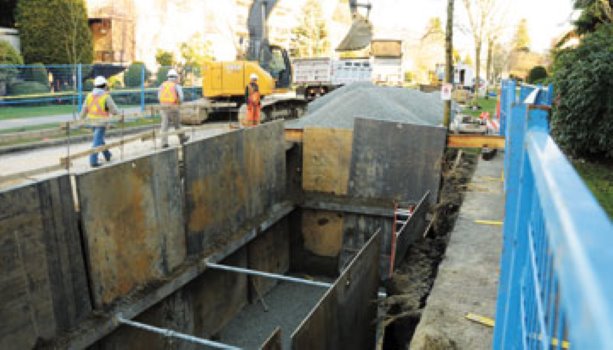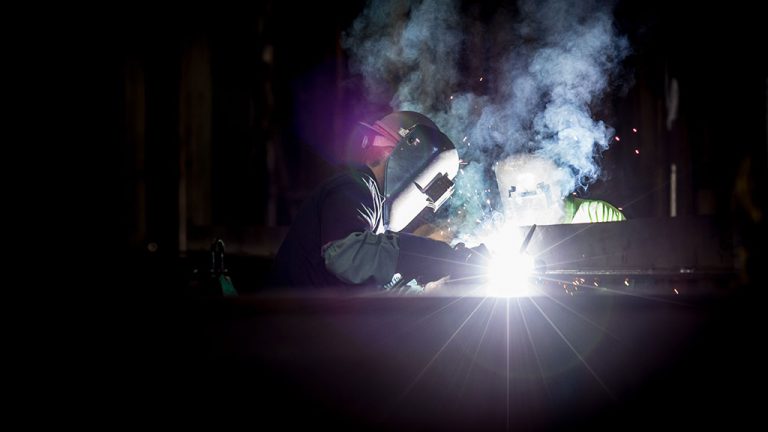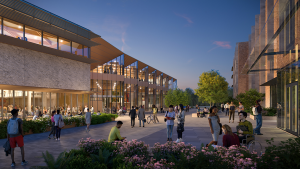BC Hydro is building a new electrical substation and replacing aging underground transmission lines in Vancouver.
Vancouver
BC Hydro is building a new electrical substation and replacing aging underground transmission lines in Vancouver.
“We were hoping to start work on the transmission section last year, but we were in a position to get started on transmission and horizontal drilling in January,” said Marcel Reghelini, project manager with the Vancouver City Central Transmission (VCCT) project.
The $200-million VCCT consists of a new indoor Mount Pleasant substation and two underground 230 kV transmission circuits that will connect it to the existing substations in downtown Vancouver, as well as associated transmission cable terminations at the two stations.
An important component of the construction is the use of horizontal directional drilling, a form of mechanical excavation, to install transmission cables beneath the bed of False Creek
“The most significant challenge for the horizontal directional drilling is the soil around False Creek, which has a lot of glacial till that contains a random selection of boulders,” said Reghelini.
“This is hard to drill through and can be a cause for the failure of horizontal drilling projects.”
To overcome this problem, an exploratory drilling program was undertaken.
The process of surface drilling began by setting up two work areas, in David Lam Park and on Laurel Street between West 6th and 7th avenues, for drilling beneath the creek bed.
The horizontal directional drilling contract was awarded to Michels Canada.
“Once the bore hole has been established and reamed to an adequate size, the contractor will pull high density conduit in the hole,” he said.
The diameter of the hole is gradually increased by taking additional drilling passes, until it reaches a diameter of about 48 inches.
Once this step is completed, grout from concrete trucks is pumped into the borehole, which displaces the drilling mud. The mud is then removed by vacuum trucks.
This creates a protective layer around the pipe bundle that also secures it.
This material also serves to dissipate heat from the cable, so they can perform at their maximum capacity.
For the portion of the transmission line that runs within Vancouver city streets, the contract was awarded to Burnaby-based Fred Thompson Contractors Ltd.
This work involves the construction of transmission ductwork and the installation of table vaults.
“The transmission ductwork involves digging a trench about one metre wide and two to 2.5 metres in depth,” he said. “In the trench, a series of PVC conduits will be installed and cable vaults will be installed at 850-metre intervals. The contractor will then pull cable from vault to cable vault.”
The vaults were prefabricated by Armtec.
This project is being driven by several factors including demand and aging electrical distribution lines, which are more than 50 years old.
The Murrin substation currently handles the largest share of customers in downtown Vancouver.
The BC Transmission Corporation (BCTC) did the planning for the project. However, the corporation was consolidated into BC Hydro in 2010, under the Clean Energy Act.
Part of the responsibility of the new integrated Crown Corporation will be the continued planning and construction of the VCCT Project.











Recent Comments
comments for this post are closed